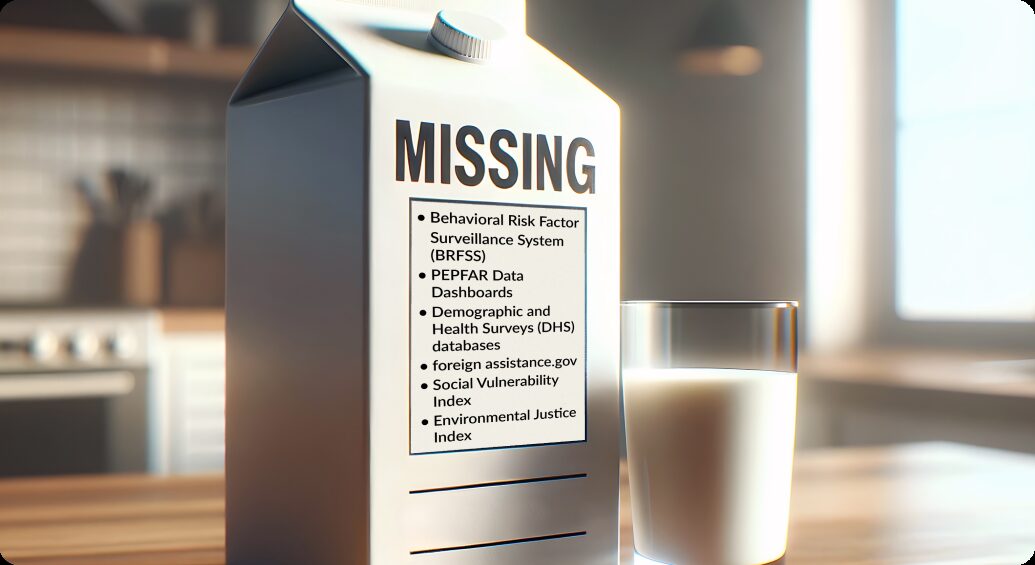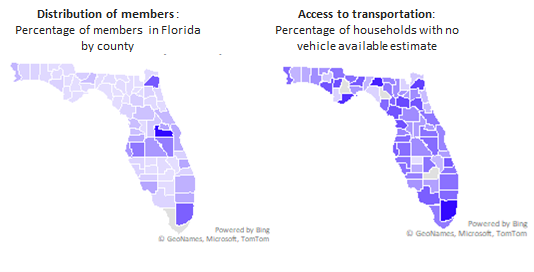Gone in an instant--CDC data at large

“You can’t manage what you don’t measure” – Peter Drucker[i]
Friday night, the Centers for Disease Control (CDC) removed a number of datasets from their websites.[ii] This included the Social Vulnerability Index (SVI). The SVI was created by the CDC and the Agency for Toxic Substances and Disease Registry.[iii]
Social Vulnerability Index
The purpose of the SVI is to “to help public health officials and emergency response planners identify and map the communities that will most likely need support” following a hazardous event, like the train crash in East Palestine, Ohio or the fires in Los Angeles. Specifically, it includes data about: unemployment, race and ethnicity, access to transportation, English-language proficiency, health insurance coverage, and disability status.
We’ve used the same data to solve real problems for health plans by improving member experience and access to care. At one plan, we used the transportation data to identify a population, understand their specific needs, and help them get preventive care. Transportation is a common barrier to care. Nearly 6 million people in the United States delay or forego medical care annually due to transportation difficulties.[iv]
Step 1: Size the problem and focus on a population
Using plan membership data (publicly available from CMS – for now) and the SVI, we mapped the distribution of the plans members (left) and where people have challenges with transportation (right). Miami popped as a place where there were a lot of members and people in need.

Step 2: Tailor the intervention to the population
The challenge was to help members understand their benefits and make use of it to schedule rides to doctors’ offices. Again, we turned to the SVI which informs us that 65% of Miami Dada County is Hispanic and that 34% speak English “less than well”. This meant that is was imperative to include Spanish-language materials as part of the campaign.
Step 3: Execute and measure
Lastly, we launched a communications program and measured the results. Relative to a control group, which did not receive any communications, we helped 15% more members get a ride to a health care provider. This lead to a 7% increase in annual wellness visits, a preventive care visit associated with high quality care.[v]
Take-away
The first point is a moral and ethical one. Public health data should never be suppressed, hidden, or doctored. When public health and safety are at stake, it is essential to rely on facts to develop data-driven responses.
Additionally, publicly available data from the CDC, the National Weather Service, and the United States Census are tools that are commonly used by a variety of businesses across the economy. Porting tactics from X (formerly known as twitter) like “unabashed[ly] slashing costs to the point that corporate processes — and sometimes even product safety — break down” are not appropriate in an interconnected and complicated environment focused on the public good.[vi]
[i] https://hbr.org/2012/10/big-data-the-management-revolution
[ii] https://www.statnews.com/2025/01/31/cdc-removes-data-on-sexual-orientation-gender-identity-from-website/
[iii] SVI-2022-Documentation.pdf; accessed January 28, 2025
[iv] Pohl AL, Aderonmu AA, Grab JD, Cohen-Tigor LA, Morris AM. Transportation Insecurity, Social Support, and Adherence to Cancer Screening. JAMA Netw Open. 2025;8(1):e2457336. doi:10.1001/jamanetworkopen.2024.57336
[v] Tong ST, Webel BK, Donahue EE, Richards A, Sabo RT, Brooks EM, Lail Kashiri P, Huffstetler AN, Santana S, Harris LM, Krist AH. Understanding the Value of the Wellness Visit: A Descriptive Study. Am J Prev Med. 2021 Oct;61(4):591-595. doi: 10.1016/j.amepre.2021.02.023. Epub 2021 May 2. PMID: 33952411; PMCID: PMC8455445.
[vi] https://www.seattletimes.com/business/slash-first-fix-later-how-elon-musk-cuts-costs/


